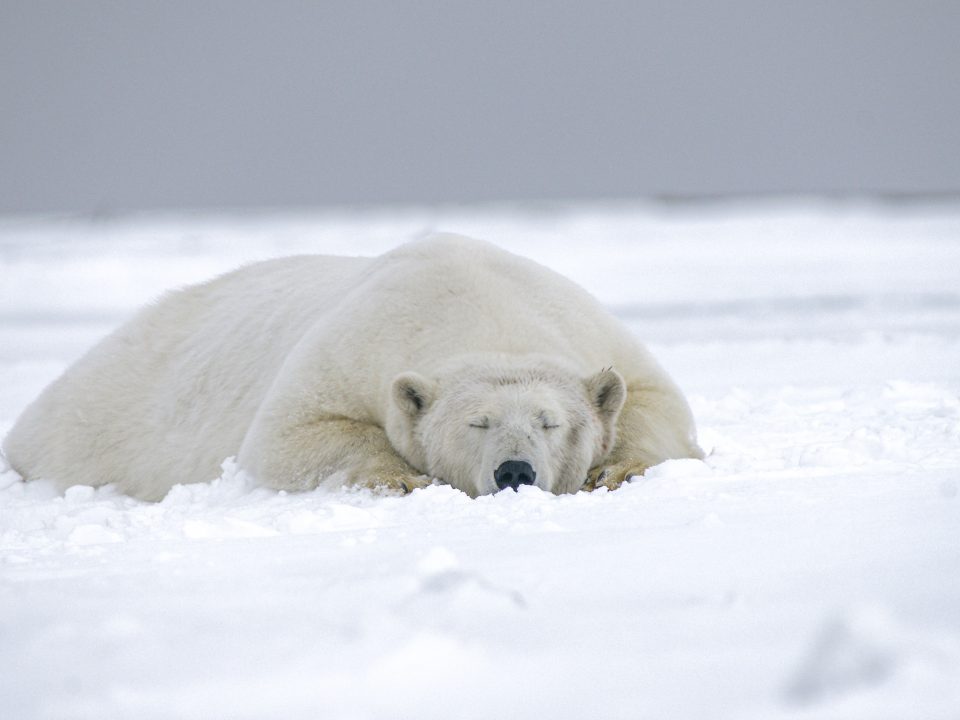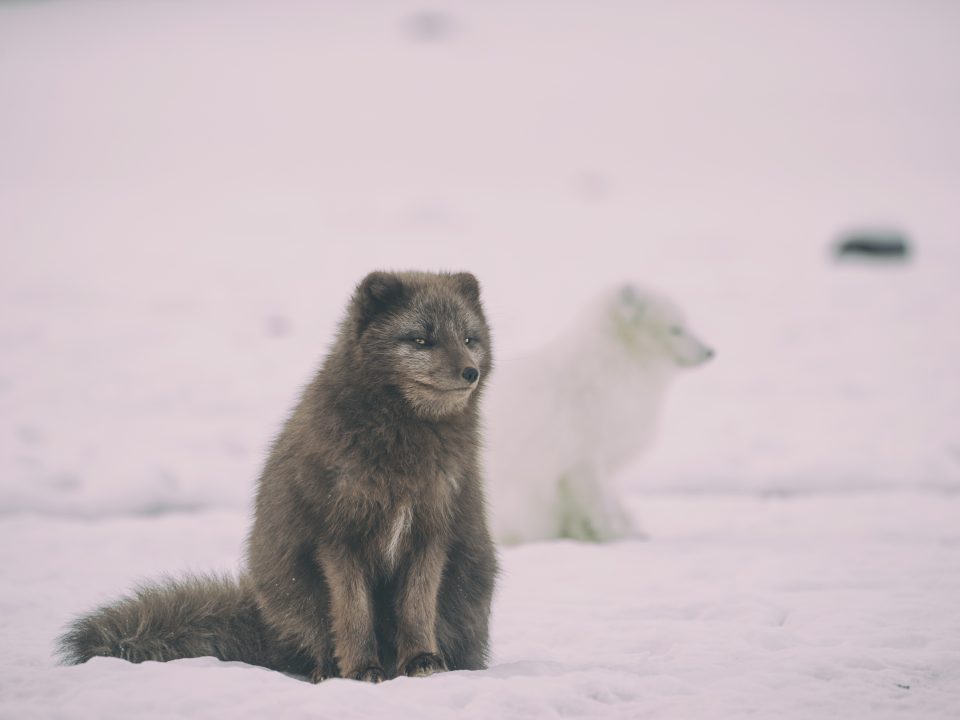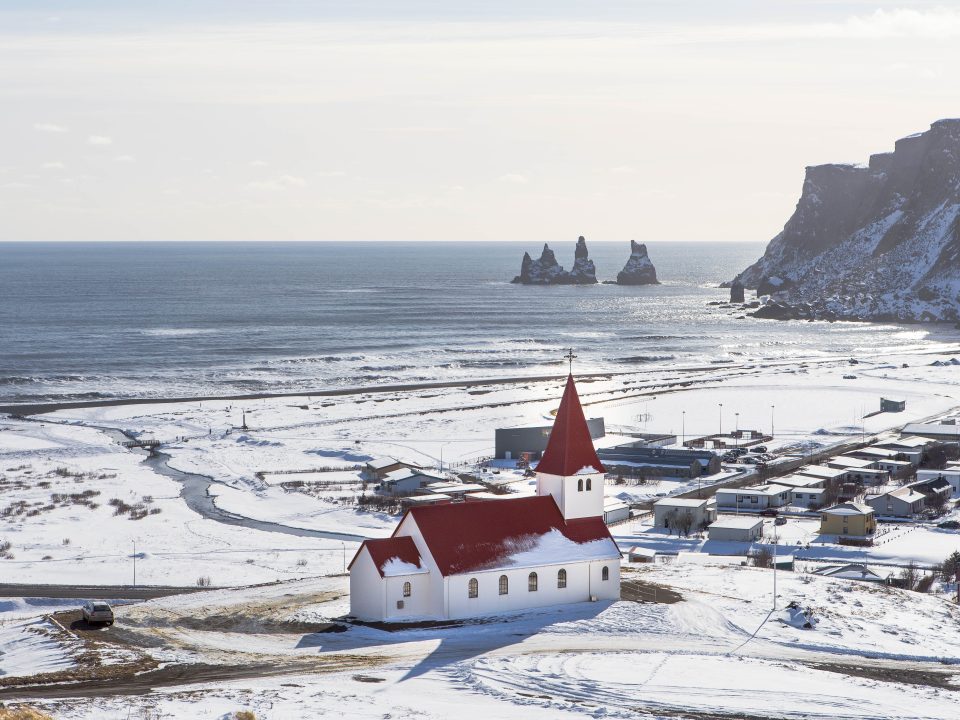8 FAMOUS NORSE SYMBOLS AND THEIR MEANINGS

ARE THERE POLAR BEARS IN ICELAND?
December 10, 2021
THE HORSES OF ICELAND
January 19, 2022Iceland has been a land populated by Vikings and one of the latest places on Earth where humans settled. The Vikings had their own beliefs, traditions, Gods and Goddesses and celebrations. Many symbols coming from their culture are nowadays used in our modern society in the movie and serie industry or in the tattoo art for instance. But what do they mean exactly? There might have been many occasions you saw those symbols without knowing that they were from the old Norse religion and what their meaning was, luckily for you, we are here to give you some insights!
Vegvisir
Vegvisir is a famous symbol you might have seen if you looked a little bit about Iceland and its folklore. The name itself means the “wayfinder”, “vegur” meaning way and “visir” meaning pointer. This symbol has eight branches meeting in the center. There are some people believing that the 8 branches represent the cardinal points (north, south, west, east, northwest, northeast, southwest, southeast) while others believe the 8 branches represent the 8 worlds of the Old Norse mythology and the center represents the 9th world, Midgard, the world of humans. Vegvisir is a very powerful symbol in the Norse mythology. It is believed this symbol had the power to guide people wearing it to the right direction for those who lost their path. Vikings used to go on raids a lot and sailing into the unknown was kind common, hence, most of the ships were decorated with Vegvisir to bring them fortune to find their way while protecting the seamen from storms. In general manners, it is also used as a talisman for luck, protection and blessings. For those believing in magic powers such as the Norse Shamans, Vegvisir would guide your heart and your steps in making the right choices in your life, helping you to find your confidence back when you lost yourself and your faith.
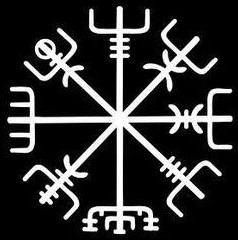
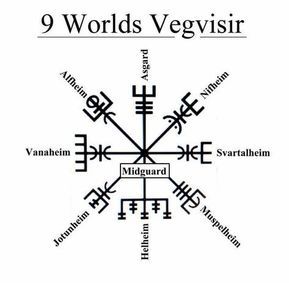
Ægishjálmur
Ægishjálmur or Helm of Awe is often mixed up with Vegvisir as they look a little bit alike. However, the meaning and use of this symbol are quite different. Symbol of victory and protection, Ægishjálmur was painted in blood on the forehead of warriors before battles, between their eyes, located where the Third Eyes is. This symbol is combining two runes from the Futhark alphabet: Algiz which represents protection and victory and Isa which represents yourself, the identity, control, focus, but also challenge, self preservation. This symbol aims to evoke the feeling of self protection from disease or depression and anxiety, but also induce terror and fear to the mind of your enemies at the same time. It is meant to help the holder of this symbol to overcome any obstacle put on your path by fate through the hardening of your soul and mind. The circle shaped symbol represents protection, safe bearer with its eight branches protecting you from all the evil intent coming from all directions.
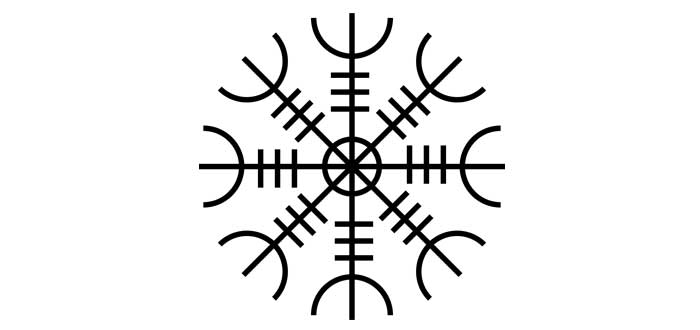
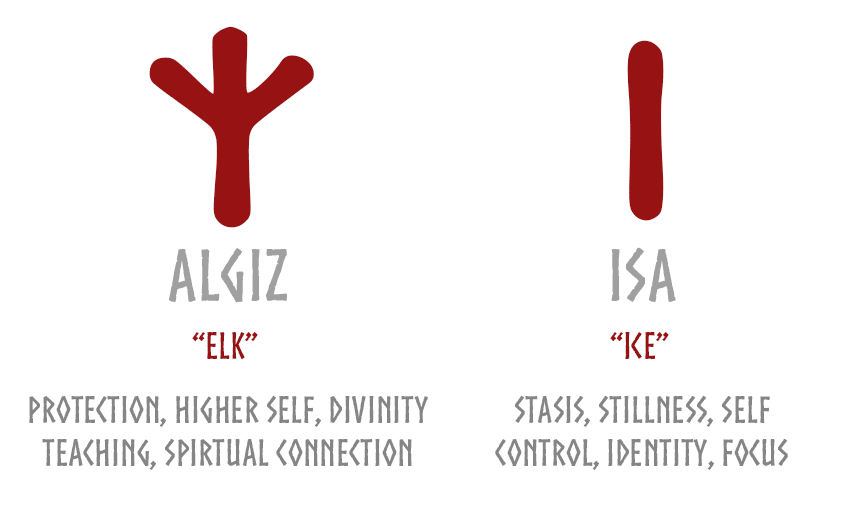
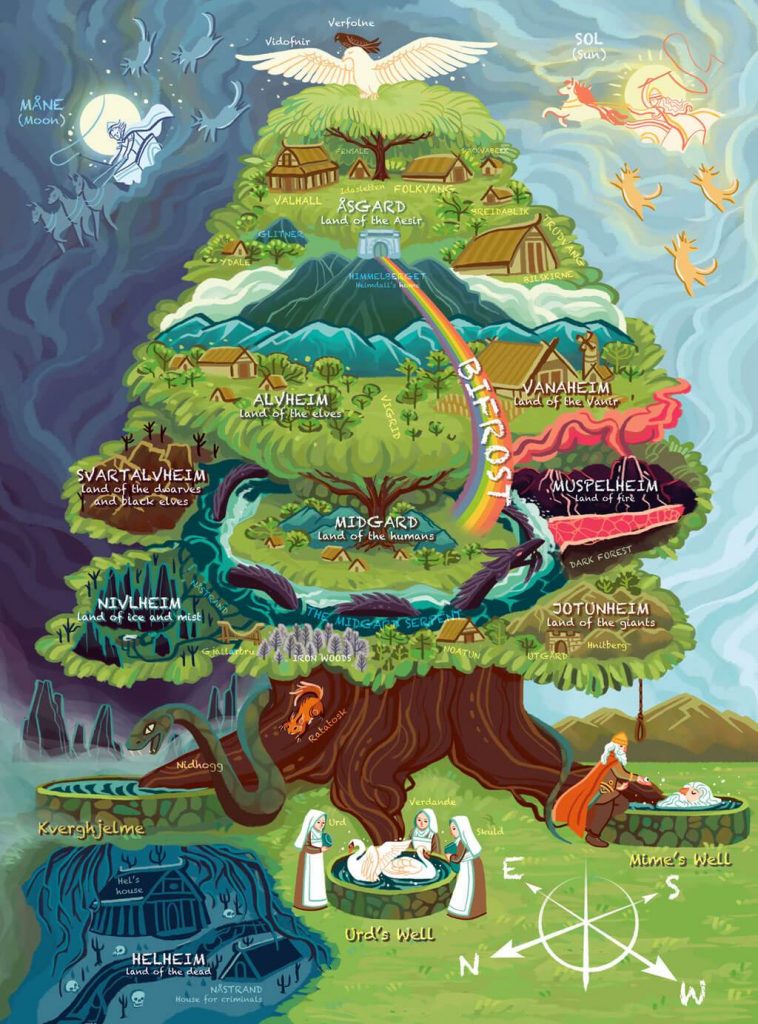
Yggdrasil
This famous symbol represents a tree connecting in the cosmos the nine realms of the Norse universe. Growing from the Well of Urd, it symbolises the creation of life coming out of the water. This is the reason why Yggdrasil is also known as the Tree of Life. It is that important since the Norse Gods were eating its fruits to keep their youth. Yggdrasil is playing an important role in the preservation of the whole Norse universe for the reconstruction of it after Ragnarök, the prophetic end of the world, since a woman and a man found shelter under it and survived this event and populated the world again. Overall, Yggdrasil represents the connection between all things, the life cycle, the cosmos, destiny, time and most importantly, harmony and balance between all things.

Mjolnir
Thor, son of Odin and one of the most popular gods, would be nothing without his famous hammer, Mjolnir. This magical item, always with Thor, would systematically get back to him after throwing it. When Vikings would hear thunder or see lightning, they would believe it was Thor using his hammer to strike down another giant. Mjolnir was not only a weapon used to slay giants but also a symbol of protection and safety. For a long time it was common for Norsemen to wear Mjolnir as a necklace for protection even after their conversion to Christianity.
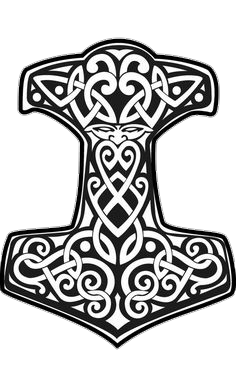
Triskele
The Triskele symbol, also known as the Horns of Odin, represents three drinking horns. Behind this symbol there is a story. Odin came to the giantess Gunnlöð to obtain the mead of poetry (skáldskaparmjöðr). He negotiated for three nights to get three sips of the mead. However, with his tricksy ways, Odin managed to drink the three horns containing the whole mead of poetry in one sip each, hence drinking the whole mead and fleeing away in the shape of an eagle. Nowadays, this symbol represents Odin and if you have it on your drinks for instance, it means you ask Odin to make your drink full of his knowledge, cleverness and quick tongue. It is also a symbol for artists and individuals with quick minds and clever tongues. The Triskele is also very present in the Celtic culture, Christianism, Hindu or even Neopaganism and Wicca, having different meanings for each one of them.
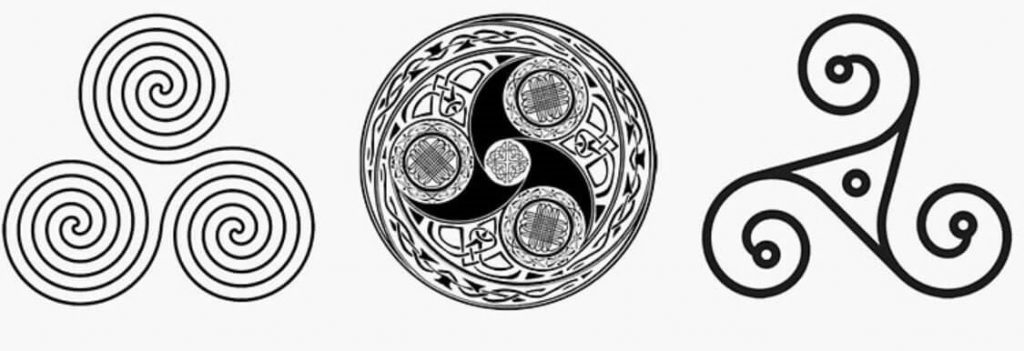
Valknut
Valknut, also known as Odin’s knot, is a symbol most of the time related to the cult of death. Present on memorial stones of Vikings, this symbol would also be associated with Odin since Odin or his valkyries are the ones guiding the souls of fallen Norse warriors to the different Norse afterlives such as Valhalla or Hel. Valknut is basically the symbol to accompany those fallen in the battle. It is also said that in the symbol itself, the nine corners of the triangles represent each nine worlds of the Norse universe united by Yggdrasil. There is another name given to Valknut, “Hrungnir’s heart” related to a tale of the legendary giant of the Eddas. This symbol demonstrates the power of Gods over death and can also be used as a talisman to protect from spirits.

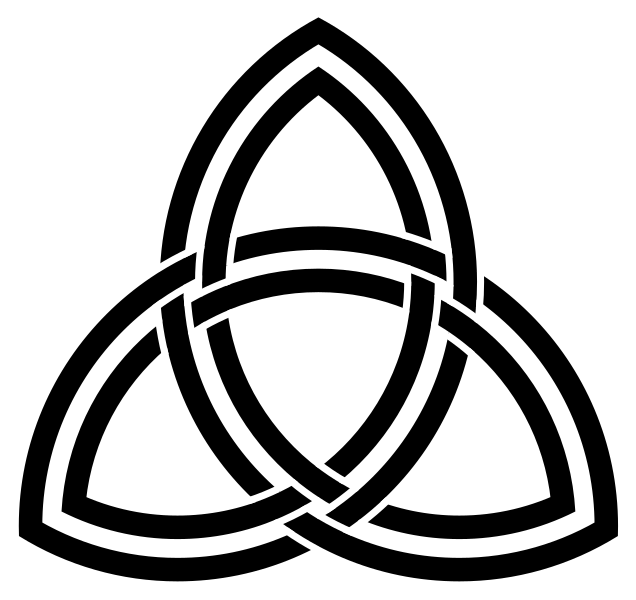
Triquetra
The Triquetra is a Norse symbol pretty similar to the Valknut and the Triskele. Related to some heathen religious concepts, it is rather difficult to tell which is the meaning of this symbol for the Vikings since it has been used by the Christians quite early with their own religious meaning (the trinity). Such as the Triskele or Valknut, the Triquetra seem to also be related to Odin. In the Norse mythology, Triquetra symbolises eternal spiritual life with no beginning nor end. It is also used as a charm. It has different meanings according to the beliefs: it represents the triple goddess (Maiden, mother, crone), the link between the past, present and future and the body, mind and soul, the concept of land, sea and sky.
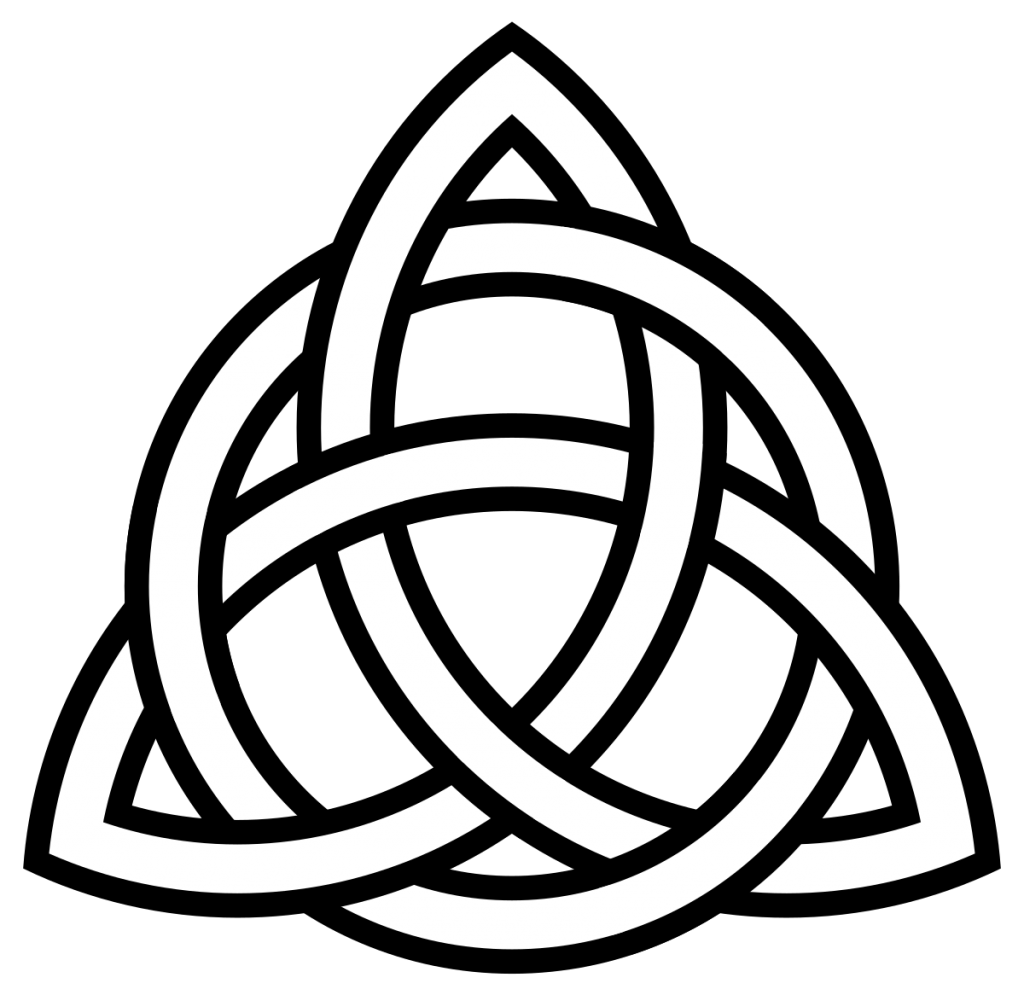
Norse alphabet
Finally, the Old Norse runes are symbols you might have seen on different occasions. Historians have found the oldest ones between the 2nd and 4th century. The runes are only used to convey special and extraordinary messages since it was believed they had special powers. Vikings would engrave the runes on jewelry or shields or regular things to protect them and grant them victory for their battles. The runes are as old as Yggdrasil since they are carved on the trunk of the Tree of Life. These runes are also known as Elder Futhark, which are the first six runes of this alphabet, and apart from having specific sounds, each one of them as an alphabet, each runes have individual meanings, like glyphs.

Until the 13th century, Vikings would pass their stories orally from generation to generation and not write them down on parchment. When they used to engrave symbols or runes, it was carved only on stone or wood and for telling important events.

